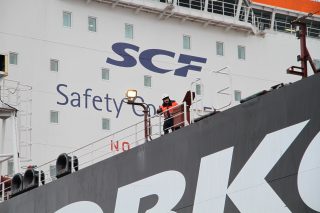Russia’s largest shipping company Sovcomflot reported deeper losses during the first nine months of the year, despite turning a profit in the third quarter.
The company reported a $300,000 profit for the third quarter, compared to a $22 million loss in 2017, however, the net loss for the first nine months reached $57.5 million, compared to $6.8 million in the corresponding period last year.
The loss includes a non-cash vessel value impairment provision of $45.9 million, in the first nine months of 2018, relating to some older crude oil and oil product tankers, Sofcomflot said in its statement.
During the reporting period, the tanker freight markets remained in a depressed state as vessel supply continued to outstrip vessel demand.
Signs of a better balance have emerged more recently following longer-term oil price recovery and worldwide fleet removals over the second half of 2017 and the first half of 2018. These factors, in part, led to the start of a recovery in freight levels in the conventional tanker fleet towards the end of the third quarter 2018 and in the large crude vessel segments in particular.
Sovcomflot noted its time charter equivalent (TCE) revenue dropped 1.5 percent from $786 million in the first half last year to $774 million during the nine-month period under review. However, during the third quarter, the TCE revenue increased 2.9 percent from $255.2 million in 2017 to $262.6 million in 2018.
Commenting on the results Sergey Frank, president and CEO of PAO Sovcomflot, said, “the Offshore and Gas divisional performances remain at the core of the Group’s profitability and earnings performance, contributing now around 60% of Group’s net revenues.”
He noted that recovery in the conventional tanker market and in the larger crude sector are showing encouragement for the fourth quarter.
Nikolay Kolesnikov, Sovcomflot senior executive officer and CFO added that SCF’s long-term offshore and gas businesses increased their TCE revenues by 17.7 percent and 14.5 percent respectively in the nine-month period, compared with the first nine months of 2017.


